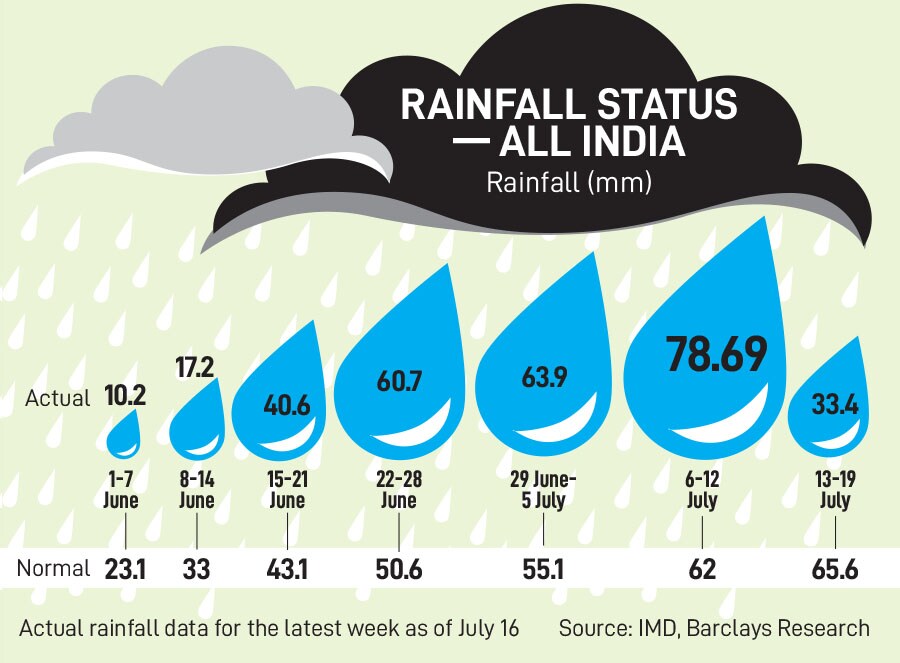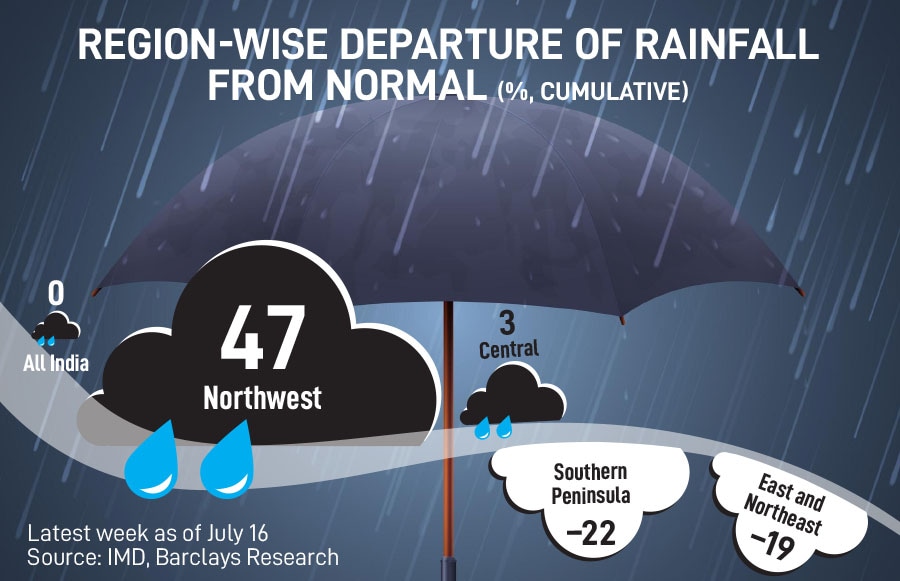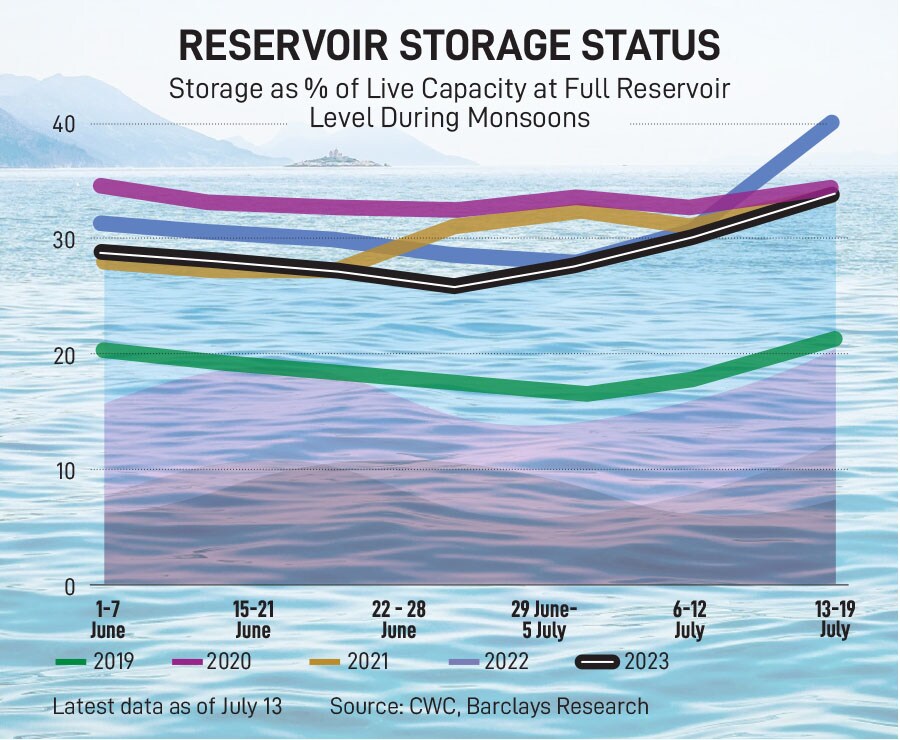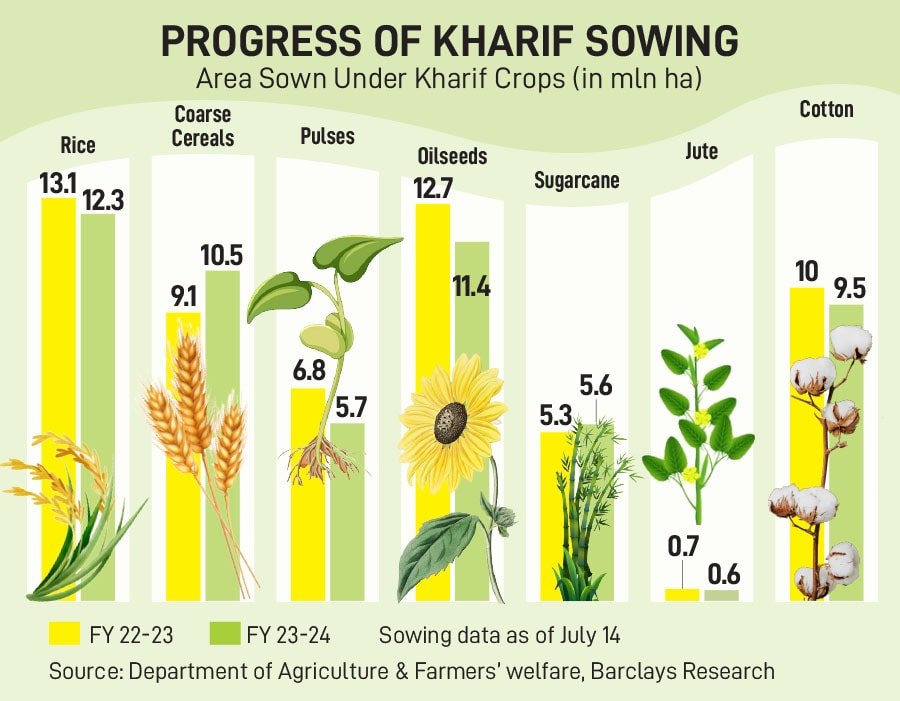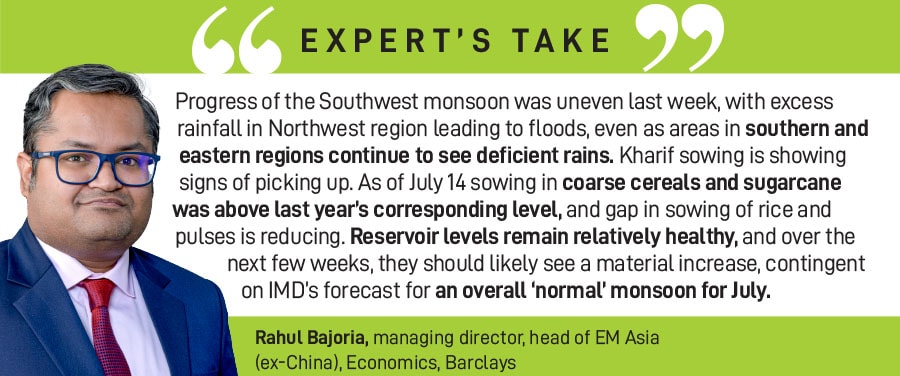Overall, monsoon rainfall is slightly above normal levels in the week ending July 19, but an uneven distribution of rain has led to floods. However, kharif sowing is still lagging compared to last year, especially for crops like rice, pulses and cotton.
Deficits in the southern and eastern regions continued but decreased week-on-week, and the central region now has surplus rain. Cumulatively, between June 1 and July 13, pan-India monsoon rainfall was 1.4 percent above the long-period average (LPA), shows Indian Meteorological Department (IMD) data analysis by Barclays.
The IMD has said that active monsoon condition is very likely to prevail over central and adjoining eastern India during the next five days, starting July 16. IMD also warned that the likelihood of El Nino forming is more pronounced during the middle of the monsoon and might continue till the beginning of next year.
![]()
![]()
Actual rainfall this year has been comparatively less. Region-wise distribution of rainfall shows that northwestern (47 percent above long-period average or LPA) and central (3 percent above LPA) regions have registered much higher rainfall than other regions. The southern peninsula is still 22 percent below LPA and eastern is 19 percent below LPA.
![]()
As of July 13, reservoir level as a portion of total capacity was at 33 percent, 29 percent higher than the previous week. However, it is 40 percent lower than in the same period last year. This amounts to 85 percent of the available capacity in the year-earlier period and 110 percent of the 10-year average for this point in the season. Expectedly, reservoir levels in the northern region of Himachal Pradesh, Rajasthan, and Punjab are higher than the all-India average, while storage levels in some states in the southern region are less than 80 percent of the 10-year average.
![]()
The area sown for kharif crops through July 7 was 42.16 mn ha, 5.4 percent below the corresponding period of 2022, which was 44.59 mn ha. Rice and pulses sowing is lagging, largely due to low rainfall in the major producer states like West Bengal (for rice) and Maharashtra and Karnataka (for pulses). Sowing of coarse cereals is up on an annual basis due to early rains in Rajasthan.
![]()
Infographics by Kapil Kashyap

